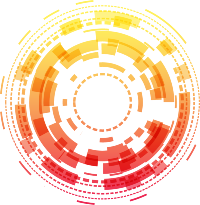Artificial intelligence (AI) is no longer just a futuristic concept; it is rapidly becoming a critical catalyst in the relentless pursuit of understanding the universe. While centuries of scientific effort have yielded profound insights, the complexity and scale of modern physics experiments often push human intuition to its limits. AI emerges as a revolutionary tool that not only accelerates discovery but challenges long-held assumptions about the boundaries of human knowledge. This paradigm shift signifies more than technological advancement; it marks a fundamental evolution in how we explore and interpret the fabric of reality itself.
The recent demonstrations of AI’s capacity to recognize patterns invisible to human analysts portend a new frontier for fundamental physics. For decades, experiments like those at the Large Hadron Collider have produced vast troves of data, the analysis of which could take lifetimes for human experts. Now, AI algorithms can sift through these datasets, uncover symmetries, and propose hypotheses that even the most dedicated physicists might overlook. Such achievements aren’t merely incremental—they threaten to redefine the very process of scientific inquiry. What used to rely on intuition, incremental experiments, and serendipity is increasingly becoming a puzzle assembled by machine intelligence that surpasses human limitations.
This technological infusion isn’t just about help; it’s about transformation. The AI recognition of symmetries reminiscent of Einstein’s theories exemplifies a proof of concept that machine-led insights can guide theory and experiment alike. When an AI isolates patterns within the chaotic data from collider experiments, it hints at a future where discoveries could be made faster, more accurately, and with a broader scope. We are witnessing an era where AI shifts from a mere assistant to an independent agent capable of conceptual breakthroughs, potentially forming the basis for a new scientific paradigm where human and machine collaboration becomes the engine of discovery.
Quantum Mysteries and AI: Decoding the Enigmatic World
The quantum realm, with its perplexing phenomena, remains one of the most tantalizing frontiers in physics. Its principle of probabilistic states and entanglement defy our classical intuition. Traditionally, deciphering quantum behavior has been a game of meticulous experimentation and complex calculations—endeavors that stretch even the most brilliant minds. But AI technology is reshaping this landscape by offering powerful computational approaches to analyze and interpret quantum data.
Entanglement, a phenomenon Einstein dubbed “spooky action at a distance,” exemplifies quantum weirdness. The notion that two particles can be linked across vast distances—such that the measurement of one instantaneously determines the other—seems paradoxical. However, breakthroughs in quantum information science, facilitated by AI, have begun to demystify these complex interactions. For instance, researchers like Anton Zeilinger pioneered experiments that revealed entanglement could be swapped between particles that had no prior interaction. Such experiments, complex in design and analysis, are now increasingly optimized by AI algorithms, which can simulate, predict, and suggest new configurations with unprecedented efficiency.
The significance of such advances extends beyond theoretical curiosity. Entanglement swapping underpins emerging quantum technologies, including quantum communication and encryption. AI’s ability to model and optimize these processes heralds a future where quantum networks could become reliable and scalable. Moreover, machine learning models enable scientists to explore vast parameter spaces, unlocking new ways to manipulate and control quantum states. This not only accelerates technological development but also deepens our understanding of the quantum universe, revealing the subtle dance of particles and fields that form the foundational layers of reality.
Reimagining Scientific Creativity and Collaboration
The infusion of AI into physics is reshaping the very nature of scientific exploration. No longer confined to human intuition alone, scientists are now empowered to harness AI’s capacity to generate hypotheses, design experiments, and interpret data. Tools like PyTheus, which represents optical experiments through graph-theoretic structures, exemplify this shift. By translating physical setups into mathematical abstractions, researchers can explore countless configurations, discover innovative approaches, and expedite the experimental process.
This technological synergy fosters a new form of scientific creativity—one where machines and humans collaborate in a dialogue of discovery. AI can identify non-trivial patterns and suggest experiments that might seem counterintuitive or too complex for traditional approaches. In this context, human intuition remains vital, but it is complemented and expanded by machine intelligence. The result is a more dynamic, exploratory, and ultimately more productive scientific process.
Furthermore, this collaboration cultivates a new scientific community—one that transcends borders and disciplines. The algorithms and computational models become shared intellectual assets, fueling collective progress. As AI continues to evolve, its integration into physics signals a future where scientific innovation is less about individual genius and more about orchestrated human-machine alliances. The potential for breakthroughs—whether unearthing new particles, understanding cosmic phenomena, or mastering quantum engineering—is now fundamentally amplified.
Certainly, critical voices warn about overreliance on AI, emphasizing the need for cautious interpretation and ethical considerations. Yet, dismissing AI’s transformative potential overlooks the unprecedented opportunities it presents. Embracing this digital partner in scientific discovery means redefining what we believe is possible and opening doors to understanding nature’s deepest secrets that once seemed forever out of reach.

